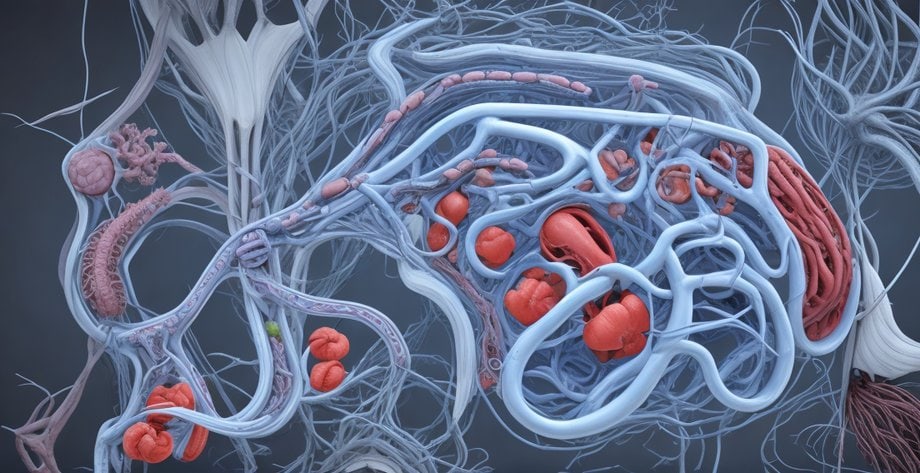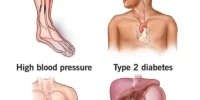How Breathing Works

Breathing is a fundamental process that sustains human life by providing the body with oxygen and expelling carbon dioxide. Despite being an automatic function, breathing is a complex process that involves various organs and muscles working in harmony.
Understanding how breathing works is crucial for maintaining good health and managing respiratory illnesses. This article aims to provide a comprehensive overview of the mechanics of breathing, starting from the role of the diaphragm in inhalation and exhalation to the gas exchange that happens in the lungs.
We will explore the importance of oxygen and carbon dioxide in the process of respiration and discuss the factors that affect breathing, such as exercise and environmental conditions. Additionally, we will examine common respiratory disorders like asthma and COPD and techniques for improving breathing, including deep breathing and meditation.
By the end of this article, readers will have a better understanding of the intricacies of breathing and how to keep their respiratory system healthy.
Key Takeaways
- The diaphragm plays a critical role in the process of breathing, contracting during inhalation and returning to its resting position during exhalation.
- Gas exchange occurs in the alveoli, tiny air sacs in the lungs, where oxygen and carbon dioxide play crucial roles in maintaining the body’s metabolic processes.
- Factors such as exercise, environment, and exposure to air pollution can affect breathing, and maintaining the proper balance of oxygen and carbon dioxide is crucial for overall health and well-being.
- Techniques for improving breathing include deep breathing exercises and meditation, which can strengthen the diaphragm, improve lung function, and promote relaxation.
The Role of the Diaphragm in Breathing
The diaphragm plays a critical role in the process of breathing, as it is responsible for the expansion of the thoracic cavity and the subsequent decrease in pressure that allows air to be drawn into the lungs.
This dome-shaped muscle separates the thorax and the abdomen and is innervated by the phrenic nerve.
During inhalation, the diaphragm contracts and flattens, increasing the volume of the thoracic cavity. This expansion creates a negative pressure gradient between the lungs and the external environment, causing air to flow in until equilibrium is reached.
The diaphragm is also involved in exhalation, but its role is passive. During exhalation, the diaphragm returns to its dome-shaped resting position as the elastic recoil of the lungs and chest wall forces air out of the lungs.
The diaphragm’s ability to control the pressure gradient during breathing is crucial for the body’s survival, and any disruptions in its function can lead to respiratory distress.
For example, paralysis of the diaphragm can result in respiratory failure, which requires mechanical ventilation to sustain life.
The Mechanics of Inhalation and Exhalation
During the process of respiration, the diaphragm contracts and flattens, causing the volume of the thoracic cavity to increase and air to be drawn into the lungs. This is known as inhalation, and it is the first stage of breathing. The mechanics of inhalation involve several physiological processes that work together to bring oxygen into the body.
Firstly, the diaphragm contracts, causing it to flatten and move downwards towards the abdomen. This creates a vacuum within the thoracic cavity, which draws air into the lungs through the airways.
Secondly, the intercostal muscles between the ribs contract and lift the ribcage upwards and outwards, further increasing the volume of the thoracic cavity.
Finally, the lungs themselves expand as the air enters them, allowing them to fill with oxygen. Together, these processes allow the body to take in the oxygen it needs to function properly.
During exhalation, the process is reversed. The diaphragm and intercostal muscles relax, causing the volume of the thoracic cavity to decrease. This forces air out of the lungs and back through the airways and out of the body.
Exhalation is a passive process that does not require any muscular effort, as the body simply allows the lungs to deflate. This process repeats itself continuously, allowing the body to take in oxygen and release carbon dioxide in a continuous cycle.
The Importance of Oxygen and Carbon Dioxide
Oxygen and carbon dioxide play crucial roles in maintaining the body’s metabolic processes, as they are essential for cellular respiration and energy production.
Oxygen is obtained through inhalation and transported by the bloodstream to the body’s tissues, where it is used to break down glucose and produce ATP, the primary source of energy for cells.
On the other hand, carbon dioxide, which is a waste product of cellular respiration, is removed from the body through exhalation.
The balance between oxygen and carbon dioxide in the body is tightly regulated by the respiratory system, particularly by the rate and depth of breathing.
Too little oxygen in the blood can lead to hypoxia, a condition that can cause tissue damage or organ failure.
Conversely, too much carbon dioxide can lead to hypercapnia, which can cause symptoms such as headache, dizziness, and shortness of breath.
Thus, maintaining the proper balance of oxygen and carbon dioxide is crucial for the body’s overall health and well-being.
The Function of the Lungs and Bronchial Tubes
The respiratory system consists of various structures, including the lungs and bronchial tubes, which work in coordination to facilitate gas exchange and maintain the body’s metabolic processes.
The lungs are the main organs of the respiratory system, where oxygen is taken in and carbon dioxide is expelled. The bronchial tubes, on the other hand, are responsible for transporting air to and from the lungs. These structures work together to ensure that the body receives adequate amounts of oxygen and expels carbon dioxide efficiently.
To understand the function of the lungs and bronchial tubes, it is important to know the following key points:
- The lungs are made up of millions of tiny air sacs called alveoli, which are surrounded by capillaries. It is in this area where gas exchange occurs.
- The bronchial tubes are divided into smaller and smaller branches, resembling a tree. The smallest branches end in tiny air sacs called alveolar ducts, which lead to the alveoli.
- The lungs have a unique structure that allows them to expand and contract with every breath. This is made possible by the presence of a thin layer of fluid that surrounds the alveoli, which reduces friction and allows for easy movement.
- The bronchial tubes have muscles that can contract and relax, allowing for the control of air flow. This is important in preventing foreign particles from entering the lungs and regulating the amount of air that enters and exits the body.
- The respiratory system is influenced by various factors such as physical activity, altitude, and disease. These factors can affect the efficiency of gas exchange and the overall function of the respiratory system.
Gas Exchange in the Alveoli
Gas exchange occurs in the alveoli, tiny air sacs at the end of the bronchioles in the lungs. These structures are essential for the exchange of gases between the lungs and the bloodstream.
The alveoli are surrounded by a network of capillaries, small blood vessels that are responsible for carrying oxygen-rich blood away from the lungs and returning carbon dioxide-rich blood to the lungs.
During gas exchange, oxygen from inhaled air diffuses into the bloodstream through the walls of the alveoli, while carbon dioxide, a waste product of metabolism, diffuses out of the bloodstream into the alveoli.
This process is driven by differences in the partial pressures of oxygen and carbon dioxide between the alveoli and the bloodstream. Oxygen has a higher partial pressure in the alveoli, so it moves from an area of high concentration to an area of low concentration in the bloodstream. Carbon dioxide, on the other hand, has a higher partial pressure in the bloodstream, so it moves from an area of high concentration to an area of low concentration in the alveoli.
Factors That Affect Breathing, such as Exercise and Environment
Gas exchange in the alveoli is a critical process that enables the body to obtain oxygen and release carbon dioxide. However, breathing is not always a smooth and consistent process. Various factors can affect breathing, including exercise and the environment. These factors can have both short-term and long-term effects on the respiratory system.
One of the most significant factors that affect breathing is exercise. During physical activity, the body requires more oxygen to support the increased metabolic rate. This means that the respiratory system needs to work harder to deliver oxygen to the cells and remove carbon dioxide. As a result, the breathing rate and depth increase to meet the demand for oxygen.
Additionally, regular exercise can improve lung function and increase respiratory muscle strength, leading to improved breathing efficiency. However, excessive exercise can also cause shortness of breath and fatigue, especially in individuals with pre-existing respiratory conditions.
Apart from exercise, environmental factors can also influence breathing. Air pollution, for example, can irritate the respiratory system and cause inflammation, leading to breathing difficulties. Similarly, exposure to high altitudes can reduce the amount of oxygen in the air, making it harder for the body to obtain the necessary oxygen.
On the other hand, spending time in nature, such as in the forest or near the sea, can have a calming effect on the respiratory system and improve breathing. Overall, understanding the factors that affect breathing is crucial for maintaining good respiratory health and improving breathing efficiency.
- Exercise increases the demand for oxygen and causes the respiratory system to work harder.
- Regular exercise can improve lung function and increase respiratory muscle strength.
- Environmental factors such as air pollution and high altitudes can negatively affect breathing.
- Spending time in nature can have a positive effect on the respiratory system and improve breathing.
Disorders That Affect Breathing, such as Asthma and COPD
Asthma and COPD are debilitating respiratory disorders that significantly impact an individual’s quality of life and require comprehensive management.
Asthma is characterized by inflammation of the airways, leading to recurrent episodes of wheezing, breathlessness, chest tightness, and coughing. The severity and frequency of symptoms can vary from person to person and can be triggered by allergens, irritants, exercise, infections, and emotional stress.
Asthma is a chronic condition, and although there is no cure, it can be managed through proper medical treatment, lifestyle modifications, and self-management education.
COPD, on the other hand, is a progressive lung disease that encompasses chronic bronchitis and emphysema. It is often caused by long-term exposure to irritants such as tobacco smoke, air pollution, and occupational dust and chemicals.
COPD is characterized by persistent coughing, shortness of breath, wheezing, and chest tightness. The disease progresses slowly and can lead to a decrease in lung function, resulting in disability and decreased quality of life.
While there is no cure for COPD, early diagnosis, and appropriate treatment can improve symptoms and slow down the progression of the disease.
Techniques for Improving Breathing, such as Deep Breathing and Meditation
One effective technique for improving respiratory function and promoting relaxation involves the utilization of deep breathing exercises and meditation. Deep breathing involves taking slow, deep breaths from the diaphragm, which helps to increase oxygen intake and improve lung function.
Meditation, on the other hand, involves focusing one’s attention on the present moment and letting go of distracting thoughts and emotions. This can help to reduce stress and anxiety, which can in turn improve breathing.
Here are four additional benefits of deep breathing and meditation techniques:
- Improved oxygenation: Deep breathing can help to increase the amount of oxygen in the blood, which can improve overall health and increase energy levels.
- Reduced stress and anxiety: Meditation has been shown to reduce symptoms of stress and anxiety, which can have a positive impact on respiratory function.
- Improved lung capacity: Deep breathing exercises can help to strengthen the diaphragm and other muscles involved in breathing, which can improve lung capacity over time.
- Better sleep: Practicing deep breathing and meditation before bed can help to promote relaxation and improve the quality of sleep.
Conclusion
In conclusion, the process of breathing is a complex and vital function of the human body. The diaphragm, lungs, and bronchial tubes work together to bring in oxygen and expel carbon dioxide through the process of inhalation and exhalation.
Gas exchange occurs in the alveoli, where oxygen is transported to the bloodstream and carbon dioxide is removed.
Various factors such as exercise and environment can affect breathing, and disorders such as asthma and COPD can impair lung function.
However, techniques such as deep breathing and meditation can improve breathing and promote relaxation.
It is important to understand the mechanics and importance of breathing in order to maintain good respiratory health and overall well-being.








